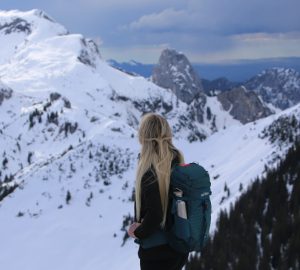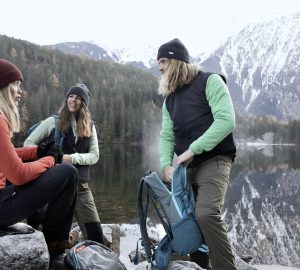Endurance, sure-footedness and a head for heights are the fundamental requirements for a via ferrata tour. And safety of course plays a leading role: Tatonka tells you here what is important in your sporty uphill climbing activities and what you must take into account when preparing your gear.
The spectrum of outdoor experiences and challenges is seldom so diverse as in the field of climbing a via ferrata: The profile of requirements in this case can range from a comfortable and secure route to protruding rock faces that can be mastered only by climbing experts. The level of difficulty and the character of the via ferrata are decisive in your planning. There is always one aspect that should never be neglected, namely, safety. Good preparation and functional gear are absolutely essential.
Reaching great heights at various levels of difficulty
Unfortunately there is no singly recognized scale which categorizes the different via ferratas according to their levels of difficulty. The most widely-known scale, however, is that which uses the letters of the alphabet from A to E:
A describes simple, secure ascents that mostly run in moderately steep terrain and are fitted out with ladders and iron hoops. Steel ropes and rails are often to be found as handrails. A via ferrata of the A category is simple to master even in their most difficult places; the steps and grips are within comfortable reach. At the same time, hikers on such routes must of course be sure-footed and with a head for heights. A-category routes are suitable for young people and for beginners in order to get a feeling for climbing on rock and the movements involved.
A little more demanding but still suitable for beginners are the via ferratas of category B, where the routes run via ladders, iron hoops, step rods and chains. Technical difficulties are moderate but nevertheless, belaying oneself should not be neglected.
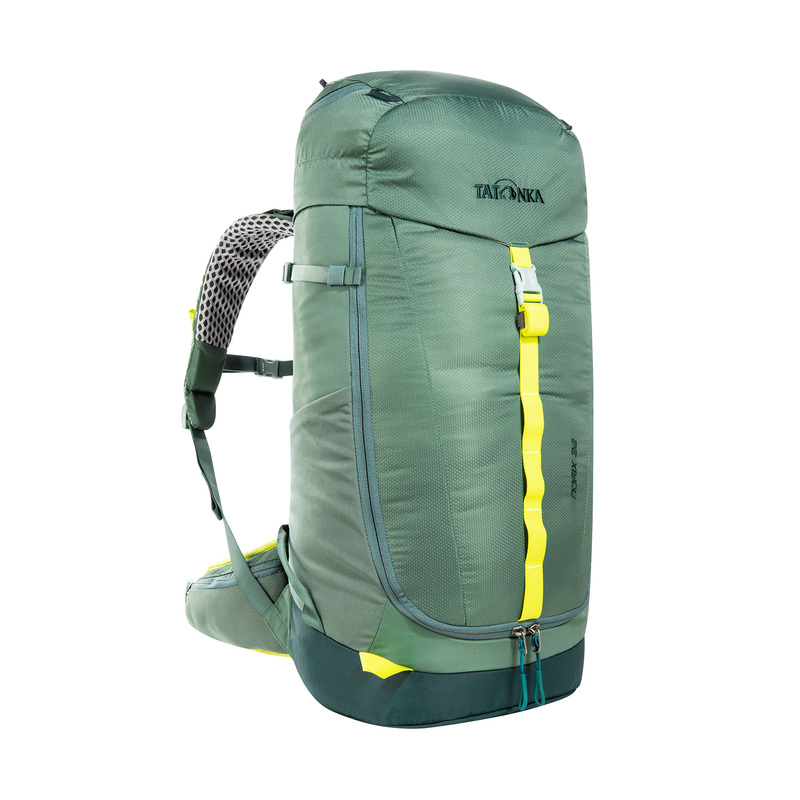
The backpacks Norix 28 Women and Norix 32 are thanks to their features the perfect companions for your next hiking or via ferrata tour.
With large front access, side pockets, gear loops and practical carabiner fixations on the shoulder straps.
The via ferrata in category C can be energy–sapping. Vertical or slightly projecting ladders with grips and steps set wider apart are quite a challenge for the climbers. This route leads through steep and in part, very steep and rocky terrain, and you really need to have a good condition, endurance and physical control in order to master these stages of the climb.
The letter D designates extremely difficult climbing paths, whereby extreme, vertical and often protruding rock faces must be mastered. Climbing aids are often at distances and even the use of safety karabiner hooks can involve real power performance. Here experience of climbing is certainly advantageous: It helps you to know techniques to move forward more easily, using also natural grips and steps.
An E-category via ferrata should only be attempted by professionals. These routes demand extremely high levels in power, endurance, mobility and concentration. Sometimes it is only possible to move forward by means of slab climbing, in other words, climbing without grips or steps but only with hand or foot contact to the rock face.
The non-plus-ultra in terms of effort, endurance and challenge are via ferratas in category F. These terrains are mostly protruding rock faces and progress is only possible by means of very small steps and slab climbing. A good general condition and sound experience of climbing, absolute body control and concentration are the basic requirements needed to master this “vertical adventure”. In addition to obligatory climbing gear, a rope safety system of approx. 15m in length is recommended. In the Alps area there are to date only two via ferrata of category F – “Bürgeralm” and “Postalm” in Austria.
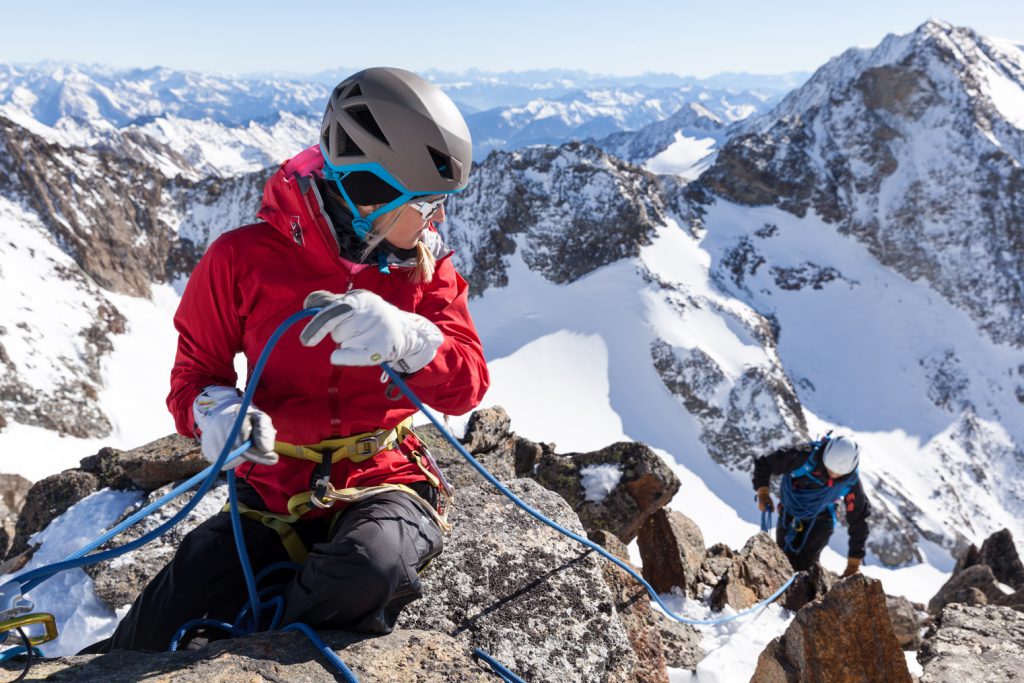
Equipment and performance at the highest level
The right gear definitely plays an important role for a successful and safe via ferrata tour. Anyone who climbs without real planning, without suitable equipment, is really risking his life. In general it is a good thing to follow the three-point rule of climbing before starting off on a via ferrata, not only to save your strength but also because this is the safest way: You should have three safe-points and from this secure position you should move always only one foot or hand to the next step or grip.
Core equipment is the Klettersteigset: Modern Y-climbing sets with top level safety devices. They have two karabiner hooks that can be hooked consecutively into the rope. En route attention should be given to a secure hold before hooking in the karabiners and also that the point for hooking and unhooking is easily accessible. The hooks are fixed one after the other so that at all times, safety is assured with at least one karabiner hook.
The two special karabiners have an automatic lock and are extremely resilient and hard-wearing. In conjunction with the two rope tails and the dynamic brake they help to keep the risk of injury in the case of a fall as low as possible. The abseil belt is optimally a combination of body harness and breast belt: It fits comfortably and can be easily put on or removed.
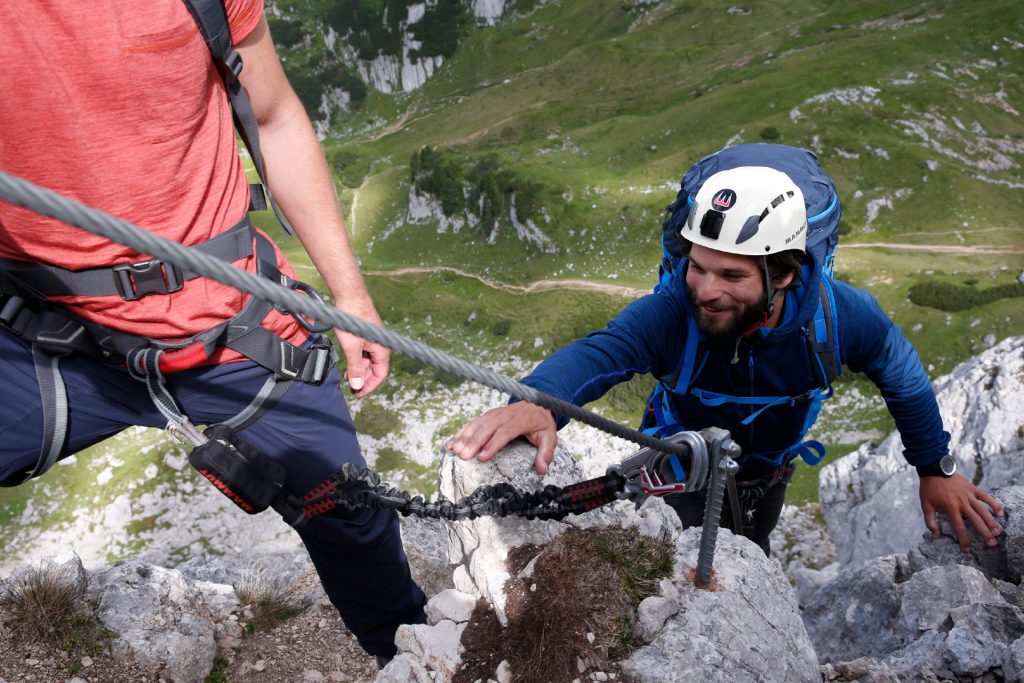
Gloves belong to the gear to be packed for any via ferrata tour. They should be well padded and made of robust leather on the palm surfaces in order to protect hands from scratches, weals or blisters as well as providing a firm grip. A special climbing helmet is essential and in many cases this can save lives; it reduces the impact of falling rocks and protects the head in a fall.
Suitable footwear is essential on any via ferrata. On some easier routes you can maybe wear light hiking boots with a robust sole. Firm grip and safety are provided by ankle-high boots with padded shaft. On long and difficult tours that in some route sections have no installed climbing aids, special via ferrata boots with a so-called “climbing zone”, a non-contoured sole section under the forefoot, are recommended. Their non-slip soles give the wearer a sure grip even on the smallest of footholds.
Also interesting: The Tälli via ferrata in Switzerland: Steep wall, mystical atmosphere
10 Rules for the via ferrata to be observed at all times
- When planning your tour, it is important to take your skills and condition into account. In a group tour, the “weakest” member sets the pace and distance.
- Before starting your tour it is essential to get information about imminent weather conditions and plan your tour accordingly. You must set off in good time.
- On many via ferratas it is not possible to simply “abandon” the tour when you have no strength left or if the weather is uncertain: Do not overestimate your capabilities and find out in advance if on your tour there is an “escape route” so that if necessary you can cut short the tour.
- Safety is the be all and end all on any via ferrata tour: Helmet, abseiling belt and climbing set are indispensable. You should also continue to wear your helmet during the breaks for protection in the case of a slight rock fall. Hiking boots must always be ankle high and provide comfortable grip and stability.
- Take only the most essential items with you on a via ferrata tour but in any case these should include a first-aid-kit, weather protection, a drink and high-energy foods such as nuts, dried fruits or energy bars, such that these are at your disposal whilst en route. Sunglasses, forehead flashlight, map and altimeter also belong to your basic equipment.
- The cable along the via ferrata is intended primarily for safety and should not be subjected to unnecessary load-pulling. Make use of natural hand grips and steps in the rock and make sure that a rope section for safety reasons is used only by one climber at a time.
- Cables and their anchoring may also hold perils as they may be damaged or loose. Any such defects should be reported in the cabin, to the cable car operators or when back in the valley to the tourist office or police.
- On the via ferrata you should go carefully but you should keep going and avoid rock slides.
- Continue to keep an eye on the weather during your via ferrata tour. If a storm is imminent, move away as quickly as possible from burrs and iron parts that attract lightning and can discharge. Danger to life!
- If there is a sudden change of weather, you should turn back in good time, even if the via ferrata is assumed to be an easy one.
Good to know: The 3 most amazing vie ferrate around Lake Garda – Sunny vie ferrate around Lake Garda for lovely autumn days





